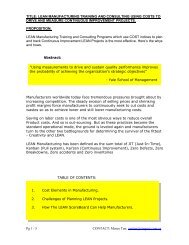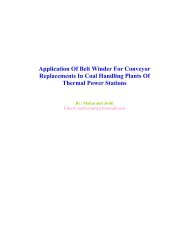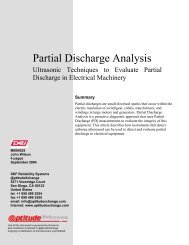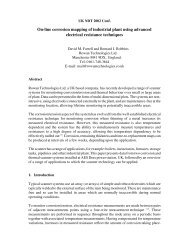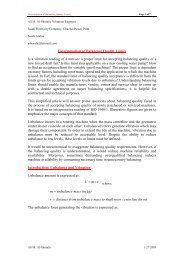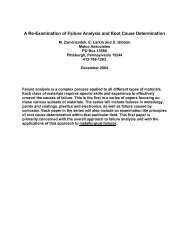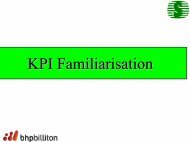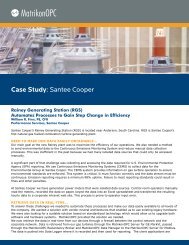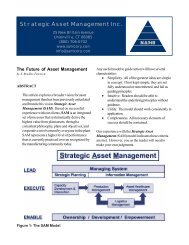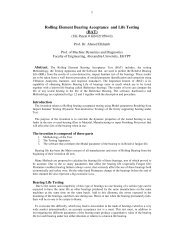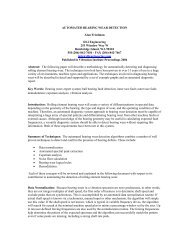Failure Analysis of Paints and Coatings - Plant Maintenance ...
Failure Analysis of Paints and Coatings - Plant Maintenance ...
Failure Analysis of Paints and Coatings - Plant Maintenance ...
Create successful ePaper yourself
Turn your PDF publications into a flip-book with our unique Google optimized e-Paper software.
service conditions. The advantage <strong>of</strong> this technique is that we will not accelerate the test such that conditionswill result in the failure <strong>of</strong> coating system. The test will provide reliable data in a short time <strong>of</strong> exposure. Thedata from this test can also provide data for calculating permeation rate <strong>and</strong> minimum coating thickness <strong>and</strong>cure schedule requirements for adequate corrosion resistance.<strong>Analysis</strong> <strong>of</strong> the evidence, <strong>and</strong> a review <strong>of</strong> the existing data <strong>and</strong> documentation are the final stages <strong>of</strong>failure investigation. All information is gathered <strong>and</strong> analyzed to form a determination on the mode <strong>and</strong>probable cause <strong>of</strong> the failure. Identification <strong>of</strong> the mode <strong>and</strong> cause <strong>of</strong> failure provide the source forrecommendations for corrective action. A final report including all relevant data, analyses, <strong>and</strong>recommendations are compiled <strong>and</strong> presented to the client. In litigation investigations, the client may not beinterested in the recommendations section <strong>of</strong> the report.Collection <strong>of</strong> Background DataThe failure analyst should determine when, where, <strong>and</strong> how the paint or coating failure occurred.Interview all users <strong>and</strong> operators involved in the failure with point-related questions. Examples <strong>of</strong> pointrelatedquestions include “how was the coating-substrate h<strong>and</strong>led after failure?” <strong>and</strong> “was it protected?”Sample RemovalThe decision to remove a sample specimen <strong>of</strong> a paint or coating, or <strong>of</strong> the underlying substrate, is avery important part <strong>of</strong> the failure analysis investigation. Sample selected should be characteristic <strong>of</strong> thecoating <strong>and</strong>/or substrate <strong>and</strong> contain a representation <strong>of</strong> the failure or corrosion attack. For comparativepurposes, a sample <strong>of</strong> the intact coating <strong>and</strong>/or substrate should be taken from a sound <strong>and</strong> normal section.In conjunction, for a complete microscopic <strong>and</strong> chemical evaluation <strong>and</strong> analysis, samples from the failure,adjacent to the failure, <strong>and</strong> away from the failure are necessary.The sample must be removed without changing the surface conditions or characteristics <strong>of</strong> thesample, nor inflicting physical damage <strong>of</strong> any kind. The sample is the basis on which the investigation <strong>and</strong>analysis rely, <strong>and</strong> extreme care must taken not destroy any <strong>of</strong> the sample’s properties.Upon removal <strong>of</strong> the sample, the exact location where it was obtained must be documented both inwriting <strong>and</strong> by photography. Any corrosion product found on the coating or the substrate should also becollected <strong>and</strong> examined. If necessary, the corrosion product may be removed carefully from the substrate<strong>and</strong> sent with the removed sample. When the sample has been removed from the structure or the component,it should be carefully packaged in a water-tight container appropriate to the size on the sample, identified <strong>and</strong>labeled.Paint <strong>and</strong> Coating <strong>Failure</strong>sThe majority <strong>of</strong> paint <strong>and</strong> coating-related failures can be attributed to six primary causes. Thesecauses are as follows.1. Improper surface preparation – the substrate surface is not adequately prepared for the coatingthat is to be applied. This may include cleaning, chemical pretreatment or surface roughening.4



